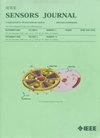A Multiple Wi-Fi Sensors Assisted Human Activity Recognition Scheme for Smart Home
IF 4.3
2区 综合性期刊
Q1 ENGINEERING, ELECTRICAL & ELECTRONIC
引用次数: 0
Abstract
With the development of wireless communication technology, wireless signals have been expanded from mobile communication to behavioral sensing. In particular, human activity recognition (HAR) relying on Wi-Fi signals has attracted increasing attention and demonstrated its great potential in the field of smart healthcare. However, most HAR solutions fail to capture the full scope of the relationship between Wi-Fi signals and human activities. To address this issue, we develop a novel depthwise separable convolution neural network (DSCNN)-based HAR by using channel state information (CSI) of multiple Wi-Fi access points (APs) sensors. To this end, we first introduce an activity-related information enhancement (ARIE) strategy to extract useful information from the CSI and mitigate background noises. Then, we design a multiview CSI fusion (MVCF) approach to calculate key features by aggregating the CSI measurements from all Wi-Fi APs. With this strategy, the feature describes the data themselves more comprehensively than a single view individually. Finally, a DSCNN is used to capture a reliable mapping between the key feature and daily activities, without a scenario-specific calibration. We design and test an HAR prototype on commodity Wi-Fi devices and perform experiments in typical indoor environments. Experimental results confirm that the proposed scheme can achieve accurate and robust HAR compared with existing ones.一种多Wi-Fi传感器辅助的智能家居人类活动识别方案
随着无线通信技术的发展,无线信号已经从移动通信扩展到行为感知。特别是基于Wi-Fi信号的人体活动识别(HAR)在智能医疗领域越来越受到关注,显示出巨大的潜力。然而,大多数HAR解决方案未能全面捕捉Wi-Fi信号与人类活动之间的关系。为了解决这个问题,我们利用多个Wi-Fi接入点(ap)传感器的信道状态信息(CSI)开发了一种新的基于深度可分离卷积神经网络(DSCNN)的HAR。为此,我们首先引入了一种活动相关信息增强(ARIE)策略,以从CSI中提取有用信息并减轻背景噪声。然后,我们设计了一种多视图CSI融合(MVCF)方法,通过聚合来自所有Wi-Fi ap的CSI测量值来计算关键特征。使用这种策略,该特性可以比单个视图更全面地描述数据本身。最后,DSCNN用于捕获关键特征和日常活动之间的可靠映射,而无需特定于场景的校准。我们在商用Wi-Fi设备上设计和测试了HAR原型,并在典型的室内环境中进行了实验。实验结果表明,与现有的HAR算法相比,该算法能够实现准确、鲁棒的HAR算法。
本文章由计算机程序翻译,如有差异,请以英文原文为准。
求助全文
约1分钟内获得全文
求助全文
来源期刊

IEEE Sensors Journal
工程技术-工程:电子与电气
CiteScore
7.70
自引率
14.00%
发文量
2058
审稿时长
5.2 months
期刊介绍:
The fields of interest of the IEEE Sensors Journal are the theory, design , fabrication, manufacturing and applications of devices for sensing and transducing physical, chemical and biological phenomena, with emphasis on the electronics and physics aspect of sensors and integrated sensors-actuators. IEEE Sensors Journal deals with the following:
-Sensor Phenomenology, Modelling, and Evaluation
-Sensor Materials, Processing, and Fabrication
-Chemical and Gas Sensors
-Microfluidics and Biosensors
-Optical Sensors
-Physical Sensors: Temperature, Mechanical, Magnetic, and others
-Acoustic and Ultrasonic Sensors
-Sensor Packaging
-Sensor Networks
-Sensor Applications
-Sensor Systems: Signals, Processing, and Interfaces
-Actuators and Sensor Power Systems
-Sensor Signal Processing for high precision and stability (amplification, filtering, linearization, modulation/demodulation) and under harsh conditions (EMC, radiation, humidity, temperature); energy consumption/harvesting
-Sensor Data Processing (soft computing with sensor data, e.g., pattern recognition, machine learning, evolutionary computation; sensor data fusion, processing of wave e.g., electromagnetic and acoustic; and non-wave, e.g., chemical, gravity, particle, thermal, radiative and non-radiative sensor data, detection, estimation and classification based on sensor data)
-Sensors in Industrial Practice
 求助内容:
求助内容: 应助结果提醒方式:
应助结果提醒方式:


